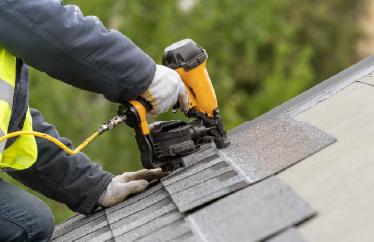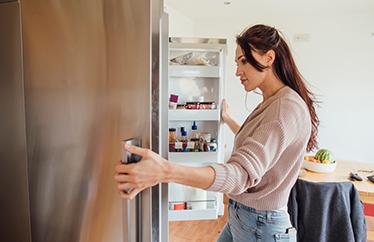The Most Valuable 5-Minute Video You’ll Ever Make

The most important inventory video you’ll ever take: in 5-minutes or less
If your home was destroyed in a natural disaster, could you name every single one of your lost possessions? Could you estimate the age and value of every piece of jewelry or furniture? It sounds crazy, but a list of items that were damaged or destroyed will be one of the first things your insurance carrier asks for during the claims process. One of the fastest ways to document all of your belongings is to create a home inventory video. Read on to find out how to get started.
Why you need a home inventory
Your homeowners insurance policy covers more than just your home. It also covers many of the things inside of it. Here's the quickest way to build an inventory.CLICK TO TWEET.
Your homeowners insurance policy covers more than just your home. It also covers many of the things inside of it. Often referred to as contents coverage, personal property coverage is provided for items like appliances, furniture, kid’s toys, electronics, clothing, sports equipment and tools. Even personal belongings in storage units can be covered. The amount of coverage is usually limited to 50% to 70% of the insurance you have on your home’s structure, but it may be increased depending on your situation.
When you file a claim and make a list of items for your insurance company, you’ll want to include as many details as possible, such as brands, model numbers and receipts with purchase dates, whenever possible. To accurately assess the value of everything you own, you should have video and photographic evidence. It’s the only way to prove you actually owned the items you lost and it will help you determine whether you have enough coverage to replace them.
Without an accurate and up-to-date inventory, the insurance settlement process can be time-consuming and frustrating. You don’t want your claim denied because you didn’t have a complete record of your personal items. It’s better to take inventory of your possessions now than to try and remember what you owned following a fire or storm.
Without an accurate and up-to-date inventory, the insurance settlement process can be time-consuming and frustrating.CLICK TO TWEET
How to shoot a home inventory video
There’s more than one way to create a home inventory. You just want to provide enough information so that your insurance adjuster can accurately determine how much your items are worth.
Your inventory should essentially include items from every room in your home, including the attic, basement and garage. Even if you don’t have the time or energy to take note of every single item in your house, listing something is better than nothing. Shooting a video should make the inventory process less stressful. And the video doesn’t have to look like it was made by a professional. Just pull out your smartphone camera and start recording (there are also plenty of home inventory apps that make the process even easier).
As you go through each room, describe each item as best as you can. For example, as you open your kitchen cabinet you could say, “Portmeirion Botanic Garden dinnerware for six that includes a dinner plate, salad plate, bread plate, bowl, cup and saucer purchased in 2017.” It’s best to have separate clips for each room in your home. That way, you’ll easily be able to go through the videos later on and point out individual items.
For valuables like jewelry, furs, artwork and collectibles, coverage following a theft is often limited. Check your insurance policy and ask your provider what dollar limits apply. If you think they’re too low, consider purchasing additional coverage. To insure possessions for their full value, it’s a good idea to get them appraised. The additional cost of insuring expensive items may be minimal and making sure you have sufficient coverage for all of your belongings is important in case you have to file a claim.
While it’s wise to focus on the most expensive items in your home, you shouldn’t ignore the things that didn’t come with a big price tag. Open each drawer, cupboard and closet and get a quick shot of the contents inside. That way, you can include everything you own in your video without making a note of each Tupperware top or jacket individually.
You bought everything in your home with your hard-earned money and you should make sure you can replace as many items as possible. Just imagine having to repurchase all of the books, silverware and clothing you lost. Let that motivate you to start creating your home inventory.
You bought everything in your home with your hard-earned money and you should make sure you can replace as many items as possible. Just imagine having to repurchase all of the books, silverware and clothing you lost. Let that…CLICK TO TWEET
Inventory upkeep
Your inventory is only useful if it’s accurate. If you spend a lot of time making your original list of personal items, it’ll be easier to update later. Remember to make a note of items you no longer have, add new purchases and keep records of your receipts. Consider updating your inventory at least once a year. Early January may be a good time to do it since you may receive a number of gifts and big-ticket items during the holidays.
Once you’ve created an inventory, make sure you keep it in a safe place. You may want to back it up digitally (in the cloud, DropBox or Google Drive) and keep a copy of it in a safety deposit box. You may also want to give a copy of your inventory to a close friend, relative or your insurance agent. Keeping it at home means it could be lost along with your possessions if your house is severely damaged.
Pair your video with photos or a list
While it’s best to create a video, making a physical list to accompany it isn’t a bad idea. If listing everything in your home seems like too much work, start by documenting anything worth more than $1,000.
You can also take photos of your most prized possessions or download a mobile home inventory app. There are several apps that help homeowners take inventory of every room in their homes. Some of them have entry fields for photos, prices, purchase dates, serial numbers and model numbers. And many apps allow you to organize items into different folders and add tags that make searching through an inventory a breeze. Remember: The more information you can provide your insurer about your personal belongings, the easier it’ll be to finalize your claim.



